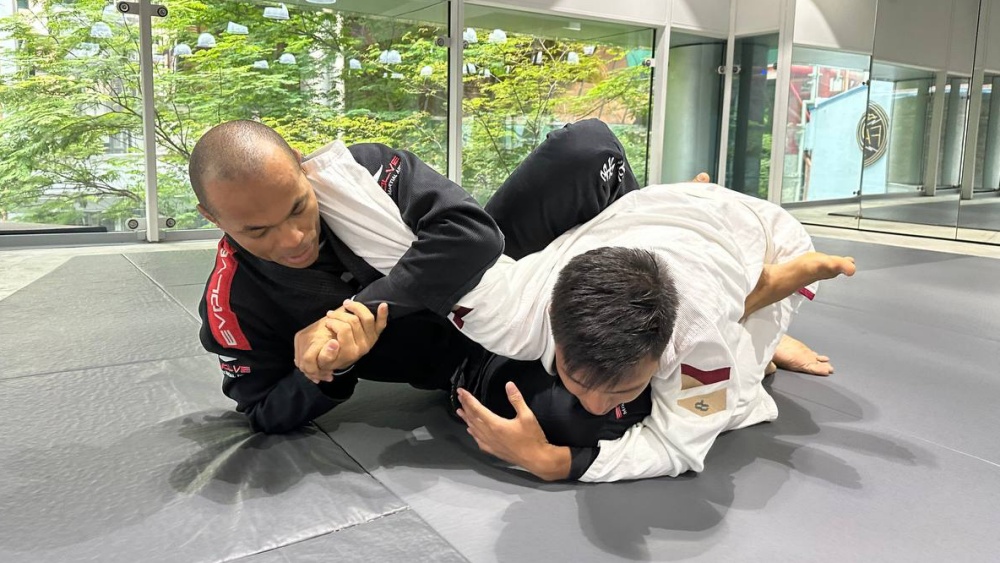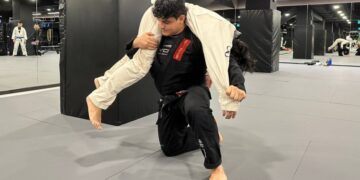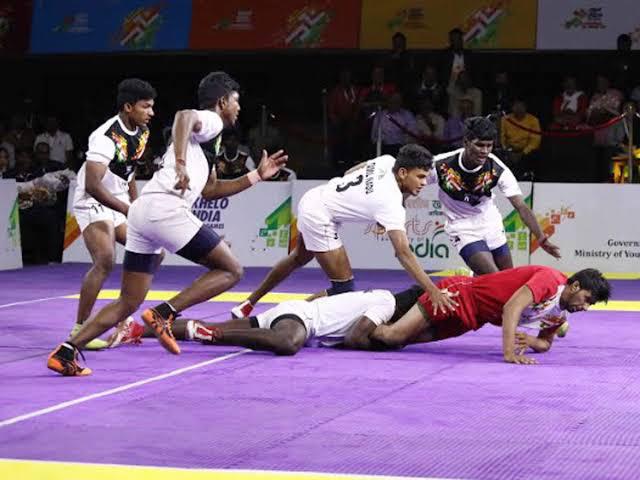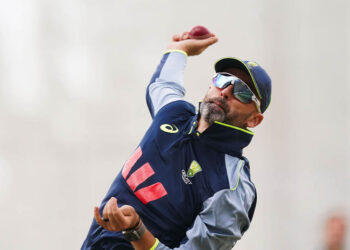
Brazilian Jiu-Jitsu is a martial art that offers many ways to finish a match. A common yet practical way to do this is to attack the opponent’s arm with a variety of arm locks. In this article, we’ll talk about a classic arm submission in BJJ, the arm crush.
Arm Submissions Defined
Before diving into the arm crush, it’s essential to understand arm submissions and their role in BJJ. Arm attacks primarily target the elbow and shoulder joints by applying hyperextension, compression, or rotational force. Examples of well-known arm submissions are the armbar, which locks the elbow joint through hyperextension; the kimura, which isolates the shoulder with rotational force; the americana, which applies a similar shoulder lock but with a different setup; and the omoplata, a shoulder lock executed using the legs.
The arm crush, also known as the arm crunch or cutting armbar, is a variation of the straight armlock that has a lot of finishing potential when applied with perfect technique.
What Is The Arm Crush?
The arm crush is a submission that applies direct pressure on the opponent’s forearm, typically by trapping their arm against your body while using your arms to generate force. It is often set up from the closed guard, butterfly guard, or even from a failed armbar attempt. This move is particularly effective in almost all combat scenarios; all you need to do is isolate the arm, and you are well on your way.
Unlike the traditional armbar, which requires control over the opponent’s entire arm, the arm crush primarily isolates the forearm and triceps, creating immense pain and pressure. This makes it an effective submission, even against opponents who have strong arms or who are good at defending against conventional joint locks. Additionally, because it does not require full extension of the arm, the opponent may not recognize the danger until it’s too late, making it a sneaky but effective technique.
5 Reasons To Learn The Arm Crush
1) Ease Of Application
The arm crush is an incredibly valuable submission that can be integrated into any grappler’s arsenal. One of the biggest reasons to learn the arm crush is that it is easy to apply. Unlike some submissions that require precise positioning and extensive setup, the arm crush can be executed with minimal adjustments. From the closed guard, for instance, you can simply trap your opponent’s arm across your body, secure it tightly to your chest, and apply pressure using your legs or body weight. The simple mechanics make it an excellent submission for beginners and experienced grapplers alike. Since the technique does not require high flexibility or extreme leverage, it is an excellent option for those who struggle with traditional armbars.
2) Flexibility
Another advantage of the arm crush is its flexibility. Unlike some submissions that are only effective from specific positions, the arm crush works from multiple setups, making it highly adaptable. Whether you are playing closed guard, butterfly guard, half guard, or transitioning from a failed armbar, the arm crush provides excellent attacking opportunities.
3) Crushing Power
What makes the arm crush even more effective is its ability to generate power in an instant. Unlike an armbar, which relies on hyperextension, the arm crush uses direct compression on the opponent’s forearm and elbow. The technique takes advantage of leverage and body mechanics, allowing you to apply immense pressure with minimal effort. Even against opponents with strong arms, the crushing force can create immediate pain and discomfort, forcing them to tap before joint damage occurs. This makes the arm crush not just a submission but also an effective control technique, keeping an opponent off-balance and reactive.
4) Transition Potential
One of the most overlooked benefits of the arm crush is that it provides a great pathway to other attacks. Even if the arm crush does not lead directly to a submission, it forces the opponent into a defensive reaction, which opens up multiple follow-up opportunities. You can transition into an armbar if the opponent pulls their arm away. If they turn away to escape, you can take their back. If they posture up, you can shift into an omoplata. The arm crush is a gateway to many other submission options, making it a valuable tool in a chain attack system.
Incorporating the arm crush into your game increases your attacking options and forces your opponent to constantly react rather than allowing them to dictate the pace.
5) Safe To Use
Lastly, the arm crush is one of the safest submissions to use in sparring and competition. Many submissions, such as armbars and kimuras, can cause injury if applied too aggressively or if the opponent does not tap in time. The arm crush, on the other hand, while still potent, is safer to use. This makes it an excellent choice for live rolling, where training partners can apply and defend against it safely. It also makes it a strategic tool in competition, allowing for quick submission attempts without excessive risk of disqualification or injury.
Adding The Arm Crush To An Existing Game
To successfully integrate the arm crush into your grappling game, it is essential to find setups that work within your existing style. If you already use armbars, the arm crush can be an excellent follow-up when an opponent defends by bending their arm. If you prefer to play guard, the arm crush can serve as a strong attack from closed or butterfly guard. By identifying high-percentage setups, you can make the arm crush a natural part of your submission chains. It is also important to drill the arm crush with partners who offer live resistance. Many grapplers are unfamiliar with the move, so training against real reactions will help you understand how to adjust and maintain control.
Drill And Practice
Like any submission, the arm crush requires consistent drilling to become second nature. Some useful drills include setting up the arm crush from closed guard, applying it from butterfly guard with an overhook, and transitioning into armbars or back takes when an opponent defends. Practicing these setups in live rolling will help reinforce the mechanics and allow you to develop muscle memory for the submission.
Conclusion
The arm crush is an incredibly effective yet often underutilized submission. With its ease of low barrier of entry, it is a highly recommended technique for grapplers of all ranks and sizes. We encourage you to add this submission to your game.
You may also like:
7 Underutilized Submissions That You Should Add to Your Game
5 Easy Positional Transitions From The Top Position
Every year, athletes embark on their Brazilian Jiu-Jitsu journey filled with hope to make their dreams come true and make history. With a month coming before the World IBJJF Jiu-Jitsu Championship 2025, grappling fans can’t…
The back mount is the most dominant position in BJJ. It allows you to set up your attacks without your opponent peripherally seeing how you set them up. Because of this, opponents will rely on…
If you’ve ever watched a fight and thought, “Wow, this guy never backs off?” You’ve witnessed pressure fighting in action. Pressure fighting in martial arts is the art of making your opponent miserable with constant…
The countless chokes you learn in Brazilian Jiu-Jitsu are a massive part of what makes it such a fun martial art. While most BJJ techniques were developed to be performed on opponents wearing Gis, many…
BJJ constantly evolves with new techniques and forgotten ones being rediscovered. While classic submissions are staples in every grappler’s arsenal, many lesser-used techniques can catch opponents off guard and open up new attacking opportunities. Focusing…
In Brazilian Jiu-Jitsu, the ability to control an opponent and dictate the pace of a match is just as important as finishing a submission. Many practitioners focus heavily on submissions, but without solid positional control,…
You’ve tried every diet there is out there: keto to force your body to use fat as its primary source of energy, intermittent fasting to improve testosterone production, even that questionable “caveman” phase where you…
Everyone has a natural fighting style. Some instinctively look to bombard opponents with volume, while others prefer a more cautious approach. Some people feel more comfortable throwing strikes at attackers, while others prefer to wrestle…
Ask any coach or seasoned fighter, and they’ll tell you the same thing: your punches are only as effective as your footwork. Most people think boxing is all about fast jabs and powerful knockouts. While…
Your environment significantly influences what works and what doesn’t in boxing. Even something that might seem insignificant to casual boxing fans, like the size of a boxing ring, influences which tactics work best. Smaller rings…
Whether you’re hitting the heavy bags in Muay Thai, rolling hard in Brazilian Jiu-Jitsu (BJJ), sharpening your jab-cross combos in boxing or just hitting the gym for a quick workout, one thing’s for sure: your…
Gravity isn’t your friend when you’re defending against takedowns. It’s working alongside your opponent to get you on the ground. Fortunately, you also have an ally: the cage. The cages used in modern MMA are…






































